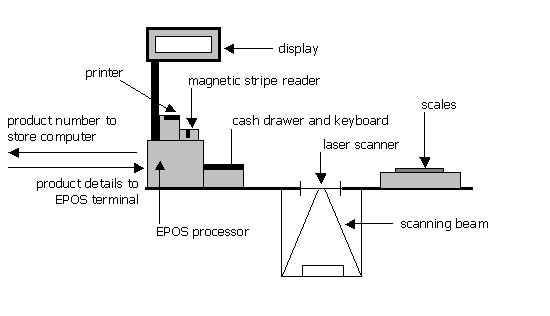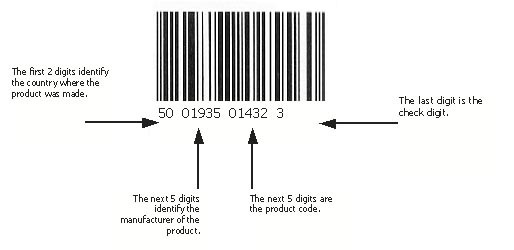ICT in Supermarkets
Supermarkets use a computer system called ‘electronic point of sale’ or EPOS to:
- monitor and control stock;
- perform sales analysis;
- collect data about customers using loyalty cards which offer points whenever money is spent in the store. This data is used to analyse the spending habits of customers and send them offers for the type of products that they buy regularly.
Supermarket checkouts are called EPOS terminals
Image

UK supermarkets use the European Article Number or EAN barcode system
Image

When a product is sold the following sequence of events take place:
- a barcode scanner is used to read the EAN number from the product
- the EAN number is sent to the branch computer by the EPOS terminal
- the branch computer uses the EAN number to search the stock file for the product’s price and description which it sends back to the EPOS terminal
- the branch computer updates the stock level for the product to show that one has been sold
- the product’s price and description are displayed at the EPOS terminal and printed on a receipt
- the price of the product is added to the total of the products processed so far
Advantages of EPOS systems in supermarkets include:
- Shelves are always well stocked, fresh food is readily available and products very rarely run out;
- Customers can be dealt with much more quickly at the checkout;
- Customers receive a fully-itemised receipt;
- Goods can be paid for using electronic funds transfer (EFT);
- Accurate and up-to-date sales analysis information is always available for managers;
- Customer buying patterns can be analysed and used to target customers with offers for goods and services that they might be interested in
